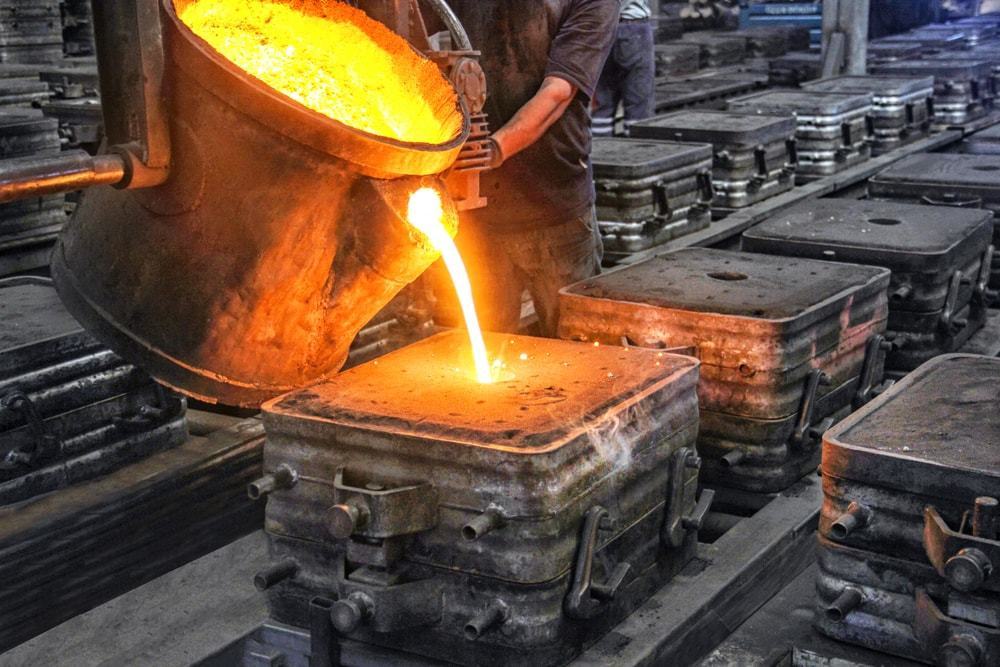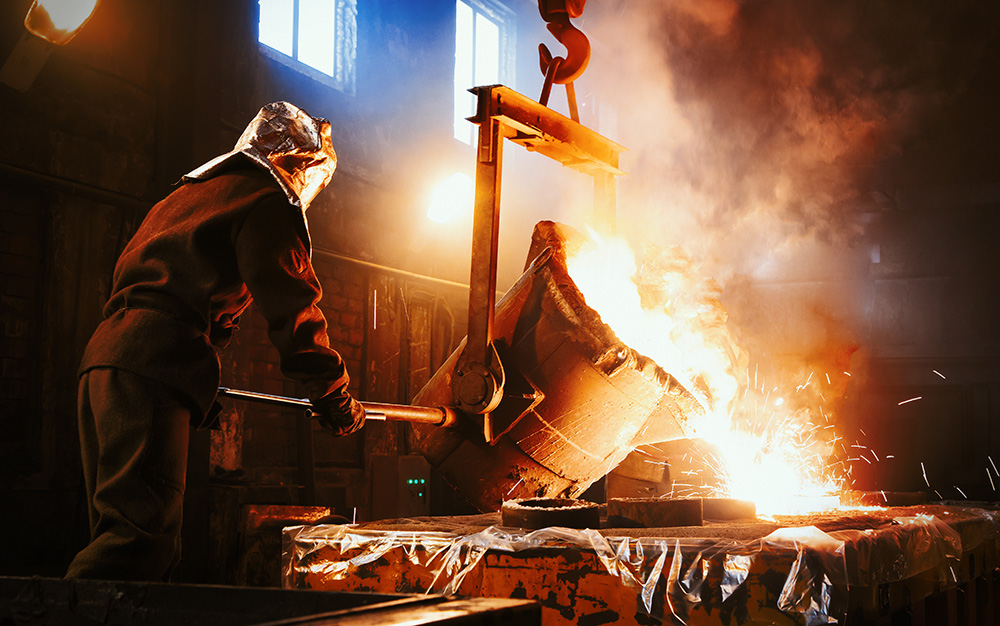Discovering the Role of a Metal Foundry in Modern Manufacturing Processes
Metal foundries are critical in the landscape of contemporary manufacturing. They give critical elements throughout various markets, adapting to the demands of sectors like auto and aerospace. Advanced strategies such as 3D printing and automated casting have transformed their procedures. Additionally, sustainability has actually ended up being a priority, affecting their practices. As these foundries evolve, the implications for making effectiveness and development are significant, elevating concerns about their future trajectory in an ever-changing economic situation.
The Advancement of Metal Casting Methods

With the surge of automation, foundries adopted techniques like die casting and lost foam casting, streamlining the manufacturing process and decreasing waste. Each development in metal casting methods has accommodated the demands of numerous sectors, from vehicle to aerospace. As metal casting proceeds to breakthrough, the interplay between strategy and technology stays important in conference modern-day production challenges, making sure that foundries thrive and adapt in an ever-changing landscape.
Integration of Advanced Technologies in Foundries
Although conventional metal casting approaches have served the sector well for centuries, the assimilation of advanced technologies in foundries is revolutionizing the production landscape. Automation and robotics enhance production procedures, improving efficiency and lowering the risk of human mistake. As soon as impossible with traditional methods, technologies such as 3D printing enable for rapid prototyping and the development of intricate geometries that were. In addition, data analytics and the Web of Things (IoT) allow real-time surveillance and predictive upkeep, eventually causing decreased downtime and boosted productivity. These innovations also facilitate personalization, enabling producers to respond promptly to market needs. As sustainability comes to be a concern, the adoption of eco-friendly innovations, such as electrical melting heaters and advanced sand improvement systems, better demonstrates the industry's dedication to innovation. Collectively, these innovations not just boost functional efficiency however additionally position foundries at the leading edge of modern-day manufacturing practices.
The Influence of Material Scientific Research on Foundry Procedures
Product scientific research plays a pivotal role in enhancing foundry procedures, influencing both the choice of products and the overall casting process. Breakthroughs in material science supply a deeper understanding of the properties of alloys and steels, making it possible for foundries to pick one of the most ideal products for certain applications. This expertise boosts the efficiency and toughness of actors items, which is important for meeting industry standards.
Advancements in material formulations and ingredients contribute to improved casting techniques, enhancing and decreasing issues manufacturing efficiency. The development of innovative metal composites and clever products permits foundries to create lighter, stronger parts, which are progressively searched for in different sectors such as auto and aerospace.
Furthermore, product science help in the recycling of metals, making procedures a lot more effective and cost-efficient. By leveraging the current searchings for in material science, foundries can adjust to developing market demands, guaranteeing their competition in a quickly transforming manufacturing landscape.
Sustainability Practices in Modern Metal Foundries
With the expanding focus on environmental obligation, modern-day metal foundries are progressively applying sustainability methods to decrease their ecological footprint (Metal Foundry). One key technique entails the recycling of scrap metal, which not only decreases waste yet also conserves energy and basic materials. Foundries are adopting sophisticated melting modern technologies that boost power performance, as a result reducing greenhouse gas emissions. Furthermore, making use of eco-friendly finishes and materials has acquired grip, more lowering harmful exhausts during production
Water preservation techniques, such as closed-loop air conditioning systems, are being carried out to lessen freshwater use. Many foundries are also great post to read investing in renewable resource sources, like solar and wind, to power their operations, thus reducing reliance on fossil fuels. Additionally, personnel training programs concentrated on sustainability practices promote a culture of environmental recognition within the labor force. These initiatives collectively contribute to an extra sustainable future for metal foundries while meeting the needs of eco-conscious consumers.
The Future of Foundries in a Transforming Economic Landscape
As the worldwide economic situation evolves, foundries encounter a myriad of challenges and opportunities that will certainly form their future (Aluminum Foundry). The increasing need for light-weight materials and progressed alloys demands advancement in production strategies and technological assimilation. Automation and clever manufacturing practices are coming to be vital for enhancing performance and minimizing operational prices. In enhancement, the rise of sustainability problems compels foundries to adopt greener procedures and recycling campaigns, aligning with international environmental objectives
The economic landscape is additionally moving, with supply chain disruptions and rising and fall raw material rates presenting substantial hurdles. Foundries have to adapt by diversifying their supply resources and spending in materials science. Partnership with sectors such as eco-friendly energy and electric lorries can foster growth. Eventually, the future of foundries article source will certainly depend on their capability to leverage technological developments while remaining receptive to market dynamics and environmental imperatives, guaranteeing their relevance in contemporary manufacturing.
Frequently Asked Questions
What Types of Metals Are Commonly Used in Foundries Today?
Frequently used steels in foundries today consist of aluminum, iron, copper, steel, and zinc. These products are favored for their diverse buildings, allowing a variety of applications in sectors such as automotive, aerospace, and building and construction.
How Does a Foundry Ensure Quality Assurance in Its Products?

What Safety Steps Are Executed in a Metal Foundry?
Metal foundries implement precaution consisting of personal protective equipment, air flow systems to minimize inhalation of fumes, routine safety training for workers, emergency situation response protocols, and extensive devices maintenance browse around this web-site to reduce threats and guarantee a risk-free working atmosphere.
For how long Does the Metal Casting Process Normally Take?
The metal casting procedure usually takes several hours to days, depending on factors such as the intricacy of the mold and mildew, the kind of metal made use of, and cooling times. Each job's needs considerably affect the duration.
What Industries Mostly Count On Metal Foundries for Production?
Automotive, construction, aerospace, and machinery industries mainly count on metal foundries for manufacturing. These sectors use cast metals for components, guaranteeing toughness and efficiency crucial for their corresponding applications in production and assembly processes.
Metal foundries are pivotal in the landscape of modern production. Aluminum Foundry. Conventional metal casting methods have actually offered the market well for centuries, the integration of advanced modern technologies in foundries is changing the production landscape. Advancements in material scientific research supply a deeper understanding of the homes of alloys and steels, allowing foundries to select the most ideal products for particular applications. With the expanding emphasis on ecological duty, modern metal foundries are increasingly executing sustainability practices to reduce their eco-friendly impact. Automotive, building and construction, aerospace, and equipment sectors mostly depend on metal foundries for production